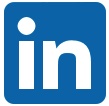Recently, I had an intensely negative experience with a trainer. In fact, it was traumatizing. If you follow me on LinkedIn, you saw my posts about the two days of training:
Trainers doing workshops for improving staff relations: do NOT require that staff share personal stories. For some folks, “Tell me how the past shaped where you are now” is NOT something they care to share in front of all of their colleagues & their supervisor, & certainly not you, a complete stranger (this happened in the first 20 minutes of the training, BTW).
Trainers regarding sensitive topics, like being anti-racist, being more inclusive, etc.: if you are training employees all from the same company, be aware of the power dynamics in the room. People are NOT going to be open with their supervisor or executive director sitting there. And passing around a survey the week before isn’t going to get you the information you need – people don’t know you yet. They don’t trust you yet. They aren’t going to be open with you at that point.
and
Management consultants: at your next company training, no matter how much you think it’s a great idea, do NOT ask people to write down their triggers on sticky notes and to then put those notes on their bodies and to walk around and read and discuss each others’ triggers. And if you decide to do it anyway, do not be surprised nor offended when one of the employees says “No. I absolutely will not do that.”
Yes, I really was asked to do this at a training.
The definition of trauma: “a deeply distressing or disturbing experience.”
Maybe I should put it on a sticky note and wear it.
The comments from other trainers were universally condemning:
I would have asked that facilitator to leave; better that someone internal take over than keep such a person around.
😳😳😳
This is so horrific as a concept I dread to think know what sort of groups are doing this in practice.
As a facilitator myself. This is terrible. And I want to say this as respectfully as I know how. The trainers that did this needs some coaching for real.
This sounds like a bad episode of The Office.
You are spot on, plus it is not very trauma informed (from a woman that manages a center on aging, trauma and holocaust survivor care).
Jayne, you may be the first person with enough awareness and bravery to raise against the concept.
The problem is the cleanup that comes after things like this are shared out and popularized.
I don’t have the time or patience to let things like this go – my face comes with subtitles on Zoom and in person. And I usually won’t hold my tongue when things are so egregious.
And then came the private messages from colleagues:
How in hell did someone actually think this would be a great idea?
Maybe she should have had each person use popsicle sticks to craft their traumas after the team building.
That is so messed up!
I really appreciate everyone who commented. It was nice to get affirmation that, indeed, this was NOT how any training should go. These comments, and the conversations with colleagues afterwards, were the only way I was able to recover from it. And I am not using the word recover lightly.
There were red flags from the start: this consultant did a survey of employees beforehand, where employees could anonymously offer insights, but then in her sessions entirely ignored the very frank and specific feedback given. Our training was to involve three half days, and I asked to know the focus and what issues it was meant to address, but my questions about such were ignored, and all staff walked in having no idea what we would be discussing nor why. In addition to the aforementioned inappropriate questions and comments, she also promoted of long-debunked pseudo science, like regarding “learning styles” and the quality of Myers–Briggs for identifying “personality types.”
The question I’ve gotten over and over: HOW and why was this person chosen for this training?
It seems that the executive director of the nonprofit that hired her had gone to one of her workshops earlier and had really enjoyed it. I have no idea the length of that training and who the participants were, nor if it was exactly what our team experienced.
So let’s get to the lessons learned:
How DO you get a quality trainer to address “soft skills” at your agency, such as conflict resolution, staff team building, creating an inclusive environment, valuing diversity and promoting equity? How do you avoid a situation, where an outside consultant sews division and mistrust at the nonprofit she was supposed to help?
Here are my thoughts:
- Look at the person’s credentials. In the case of this consultant, she has only an associates degree from decades ago and three certificates, one in “intercultural communications” and one in “interrupting racism”, both of which seemed to be acquired in just a few days (or less?). That she has no formal studies nor professional work regarding psychology or human resources management, let alone at least a full undergrad (if not a Master’s Degree) should have been a MASSIVE red flag.
- Look at the person’s work experience AND volunteering experience. Is it diverse? Is there at least a few years of experience working in an environment similar to what your nonprofit is working in? In the case of this recent consulting experience, her work experience is entirely in corporate marketing with high-tech companies. She has no visible professional nor volunteering experience working with a diversity of people in terms of education and economics, and her entire work experience seems to be with people at middle or upper economic levels (in stark contrast to the makeup of our group).
- Ask the person how they will build trust with the group, some of whom do not work together and may not even know each other.
- Listen to the exercises proposed by the consultant. What does the consultant intend for them to accomplish? Do YOU feel they are appropriate?
- Ask how the person will address power dynamics, where people may be reluctant to be honest because their supervisor or someone they do not trust is in the room.
- Ask the person if they will survey staff before the training and ask to look at what those questions are (but not see the answers, since those should be anonymous), so you know that they will tease out issues you are hoping to get addressed with this training.
- Define what success would look like at the end of the training and ask the trainer how that will be measured.
- Ask for references from past training experiences, but make sure they are not all from fellow consultants or just executive directors.
I have had some amazing soft-skill training experiences, including regarding creating an inclusive environment, valuing diversity and promoting equity, as well as addressing staff conflicts. Some have been quite challenging and moved people in the room to tears. But it’s been only two – this one and one in the 1990s – that have left some participants feeling tramautized.
I wish Susan Ellis’ trainings on staff and volunteer conflicts was recorded – it was always an amazing thing to behold. I could write a whole blog about it. I watched her do it twice, with two very different groups, and I couldn’t believe how deftly she navigated the moments when very real hostilities started to emerge. In both, everyone left with greater understanding and respect and a willingness to be more observant and listen.
There is a training in particular that I can say changed my life forever, by a consultant that was an adherent to Peter Drucker’s management principles. The executive director of the nonprofit where I was working approached me the following week to say that she had had so many misconceptions about me and she was embarrassed by assumptions she had made because of how I dressed (she is VERY corporate and part of a very known power couple of the time in Silicon Valley; I am none of those things), and how blown away she was by my ideas, etc. I cried. She cried. She was one of the best people I’ve ever worked for. I’ve never seen a company transformed so quickly and for the better the way that one was after that two-day training.
Another was a very quick, very fun training of may two or three hours at the University of Texas at Austin. When I started working there, all new staff were required to take this training, and I was lucky enough to take it with one of my best friends (who gave me away at my wedding years later). No one left feeling belittled or lesser than anyone. In fact, we laughed. A LOT. She created the welcoming, honest atmosphere she wanted us to cultivate in our own workplaces. We all left so much more curious about each other and our co-workers, so much more aware of how we can jump to assumptions about each other that aren’t correct, and how someone can smile at you and not seem to be hurt by something you’ve said and they are, in fact, absolutely torn up inside. And her emphasis on power dynamics was outstanding and framed all of the conversations in a way I’ll never forget and frequently references when working in some of our world’s poorest countries, particularly in post-conflict zones.
I’m on a journey. I am always open to learning. I am always open to reconsidering viewpoints and opinions. But I also value my time and my dignity and expect others to do so. No staff training is a mere line item on a list to be checked off. Don’t treat it as such. And remember that these trainings should not make staff feel belittled or marginalized.













